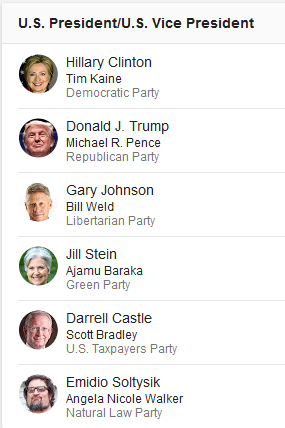Despite Obama’s victories in Michigan during both election cycles, the state has remained a valuable swing state during the 2016 election featuring campaign stops from both Donald Trump and Hillary Clinton. Even though Trump has made campaign stops and dedicated significant financial resources the latest polling numbers show the Republican nominee remains unlikely to win Michigan’s 16 electoral votes. Things could have been different, however, had earlier proposals aimed at breaking up Michigan’s electoral votes been successful. Indeed, two proposals offered by Republican Senators, David Hildebrand and Mike Green in September 2015, could have offered Trump, or any losing candidate, a path forward facing a shrinking electoral map indicated by recent unfavorable polling and early voting data for the Republican nominee from swing states like Virginia, Nevada, and Colorado. 
Their proposals advocated district-level (SB 489) and proportional (SB 197) allocation of electoral votes. They aimed at boosting the viability of Presidential nominees campaigning in Michigan as a whole opposed to solely focusing on swing districts or other swing states. These proposals would have likely been a boon for future Republican nominees considering that Republicans have not won Michigan electoral results since 1988. Republican strongholds in both Western and Northern Michigan that have consistently voted Republican in recent Presidential elections would have offered a much more feasible electoral map for Trump considering his dropping polling numbers in other crucial swing states.
According to Senator Green’s proposal, each district would be allocated one electoral vote, with two being determined by the candidate with more than 8 electoral votes. During the presidential election in 2012, for example, district level results would have allocated 11 electoral votes for the Republican nominee Mitt Romney despite losing the state by 10 percent, constituting a drastic swing in the Electoral College. Currently, the Congressional balance indicated above remains heavily Republican, and while there are potential swing districts that could turn Democratic, Trump would certainly benefit from a district-level allocation of electoral college votes. While Donald Trump is currently polling at a lower percentage than Romney’s results in Michigan, the nominee would have picked up at least some of traditionally conservative house districts, probably a minimum 5 electoral seats. Although there is a prevailing Clinton lead in all popular election models, considering the Presidential race could still end up close according to the projections by 538, 5 electoral college votes could have made an impact in this election.
Popular Vote Scenario
Under the proposal offered by Senator Hildebrand, Michigan’s Electoral College votes would have been allocated proportionally. Under the 2016 scenario, such a proposal would also have allocated some electoral votes towards Trump. The latest polling data of a four person horse race (10/26) from RealClearPolitics shows a 8.8 point Clinton lead in Michigan (43.8 to 35.0). With a larger than typical number of still undecided voters & high uncertainty regarding the continuing support of third-party candidates in the state creating a concrete projection under this proportional model is difficult. Indeed, there remain two electoral votes under proportional representation accounted for among undecided voters. Under current polling averages, Trump would have been allocated 6 electoral votes, with Clinton earning 7. Interestingly enough, Gary Johnson would have earned an electoral college vote based on his current polling average (7.5%).
These efforts were eventually unsuccessful. Neither bill ended up leaving committee for a floor vote, indicating the difficulty in changing Michigan’s electoral college system that has prevailed since the 1800s. Perhaps discussions will intensify leading up to the 2020 presidential election if Republicans fail to win Michigan’s 16 electoral college votes and facing a changing electorate that potentially hurts future competitiveness in other swing states. In the face of changing demographics in many swing states, it certainly seems possible.
http://www.realclearpolitics.com/epolls/2016/president/mi/michigan_trump_vs_clinton-5533.html
http://cookpolitical.com/house/charts/race-ratings
http://www.mlive.com/lansing-news/index.ssf/2015/09/michigan_2016_electoral_colleg.html
http://www.gongwer.com/programming/news.cfm?Article_ID=541900105



